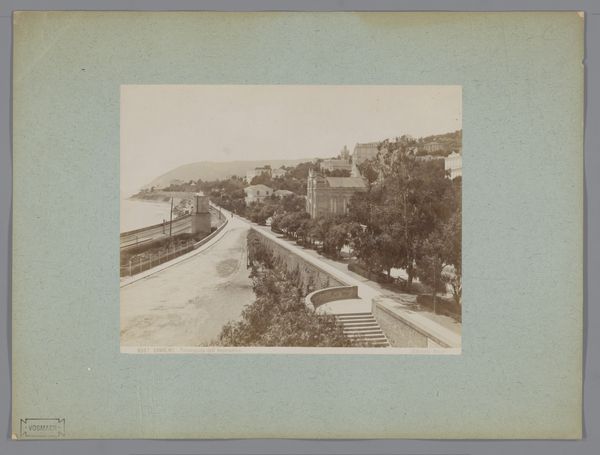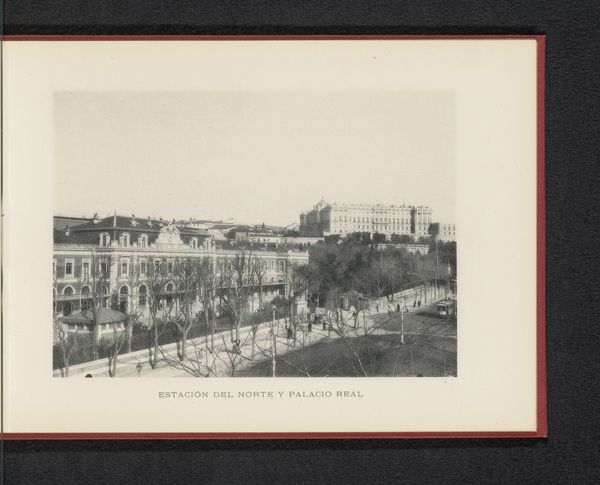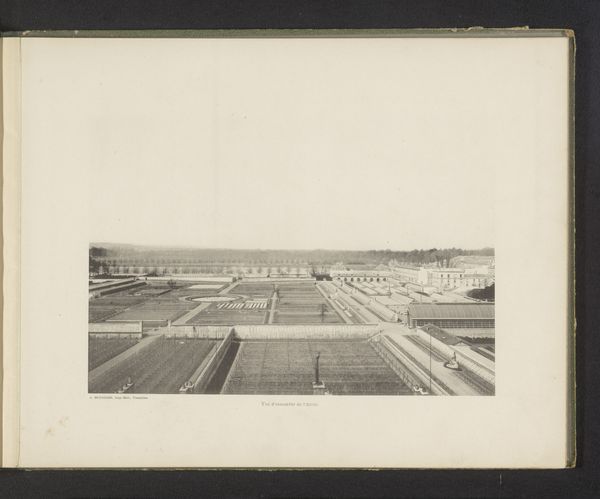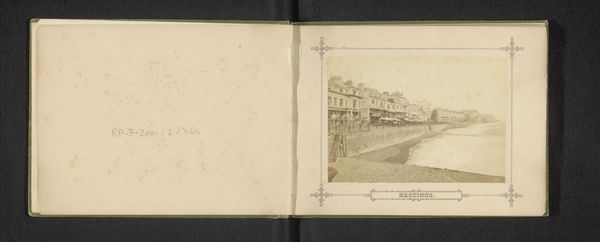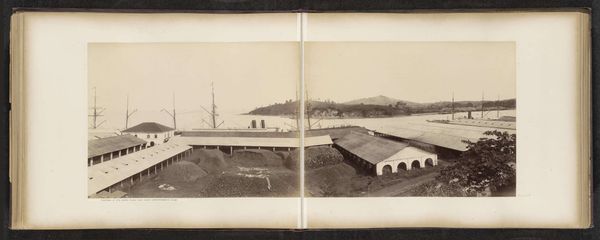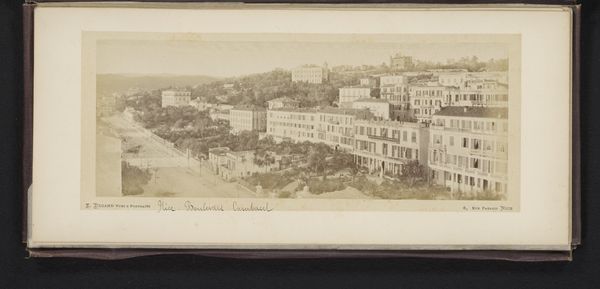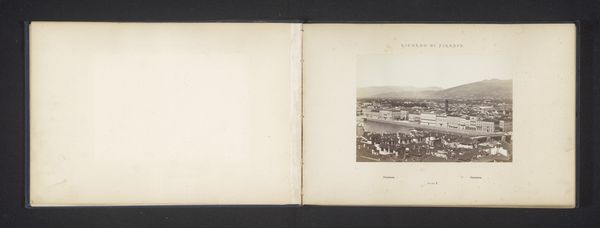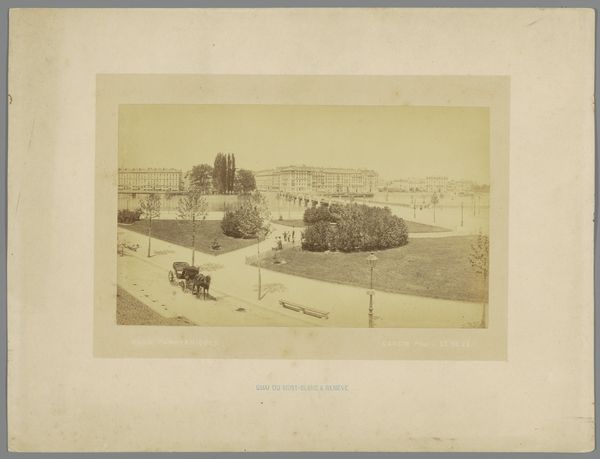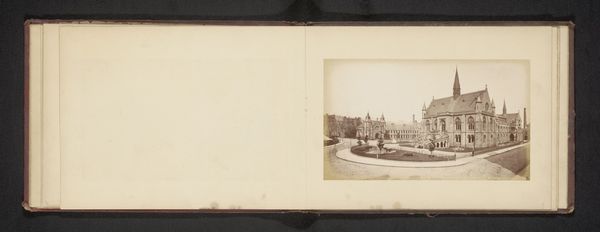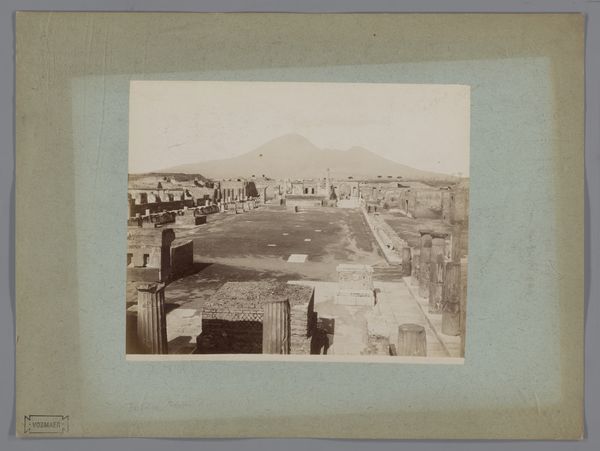
#
aged paper
#
toned paper
#
muted colour palette
#
ink paper printed
#
white palette
#
charcoal art
#
unrealistic statue
#
pencil art
#
watercolor
#
historical font
Dimensions: height 222 mm, width 84 mm
Copyright: Rijks Museum: Open Domain
This sepia-toned photograph shows a view of bridges and a river, made by Eugène Degand. This image is more than just a pretty picture; it's a product of a specific time and place, and the materials used to create it reflect that. In the 19th century, photography was becoming more accessible, yet still required skill and specialized knowledge. The process involved coating a glass or metal plate with light-sensitive chemicals, exposing it in a camera, and then developing the image in a darkroom. The resulting photograph has a unique materiality. The tones, textures, and details captured in the image all speak to the artist's technical skill, and control over materials. Consider also the social context. Photography was becoming a powerful tool for documenting the world and shaping public opinion, and offered new possibilities for both artistic expression and commercial enterprise. Degand's photograph, in its own way, challenges traditional distinctions between fine art and documentation, prompting us to think about the social and cultural significance of this relatively new medium.
Comments
No comments
Be the first to comment and join the conversation on the ultimate creative platform.
